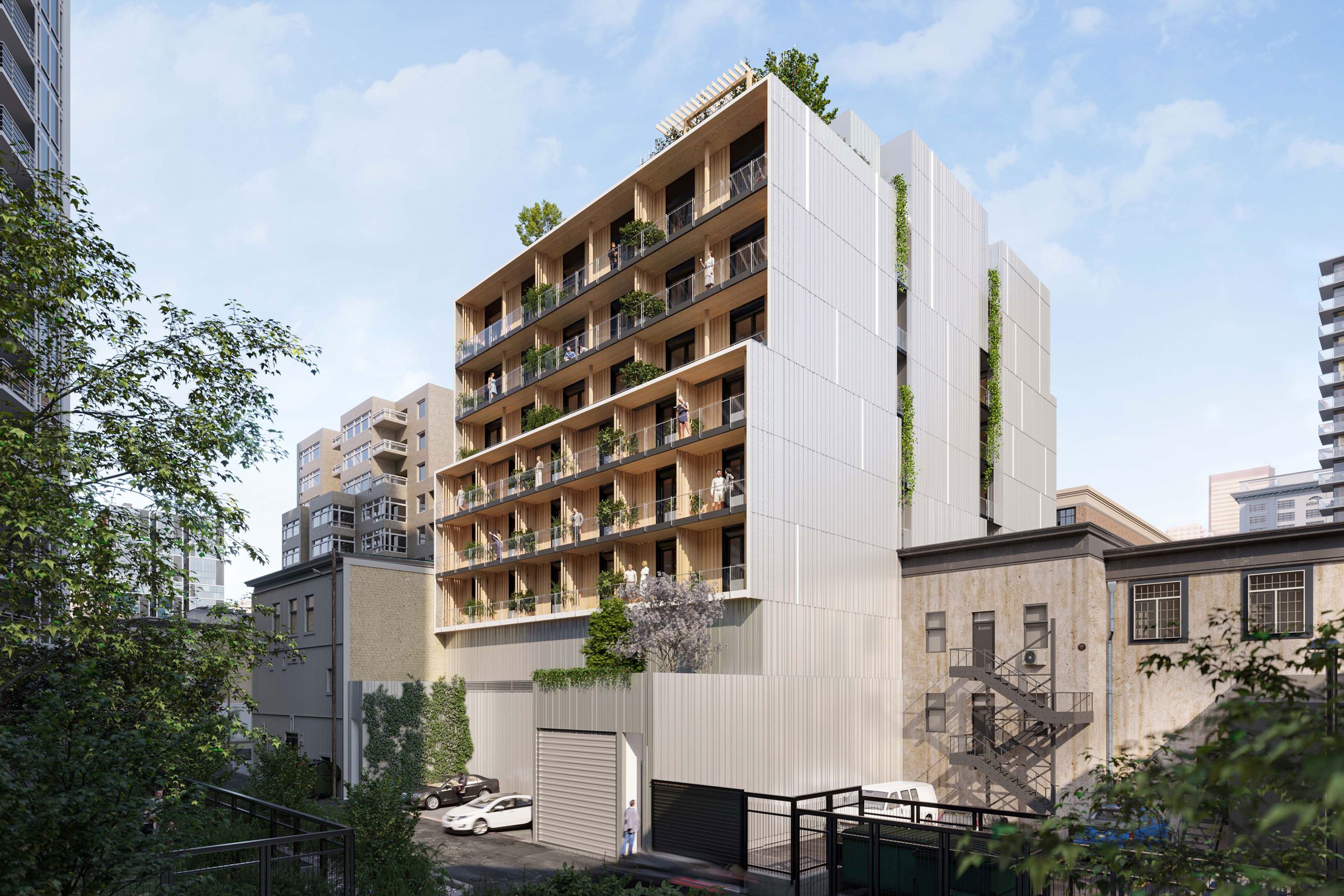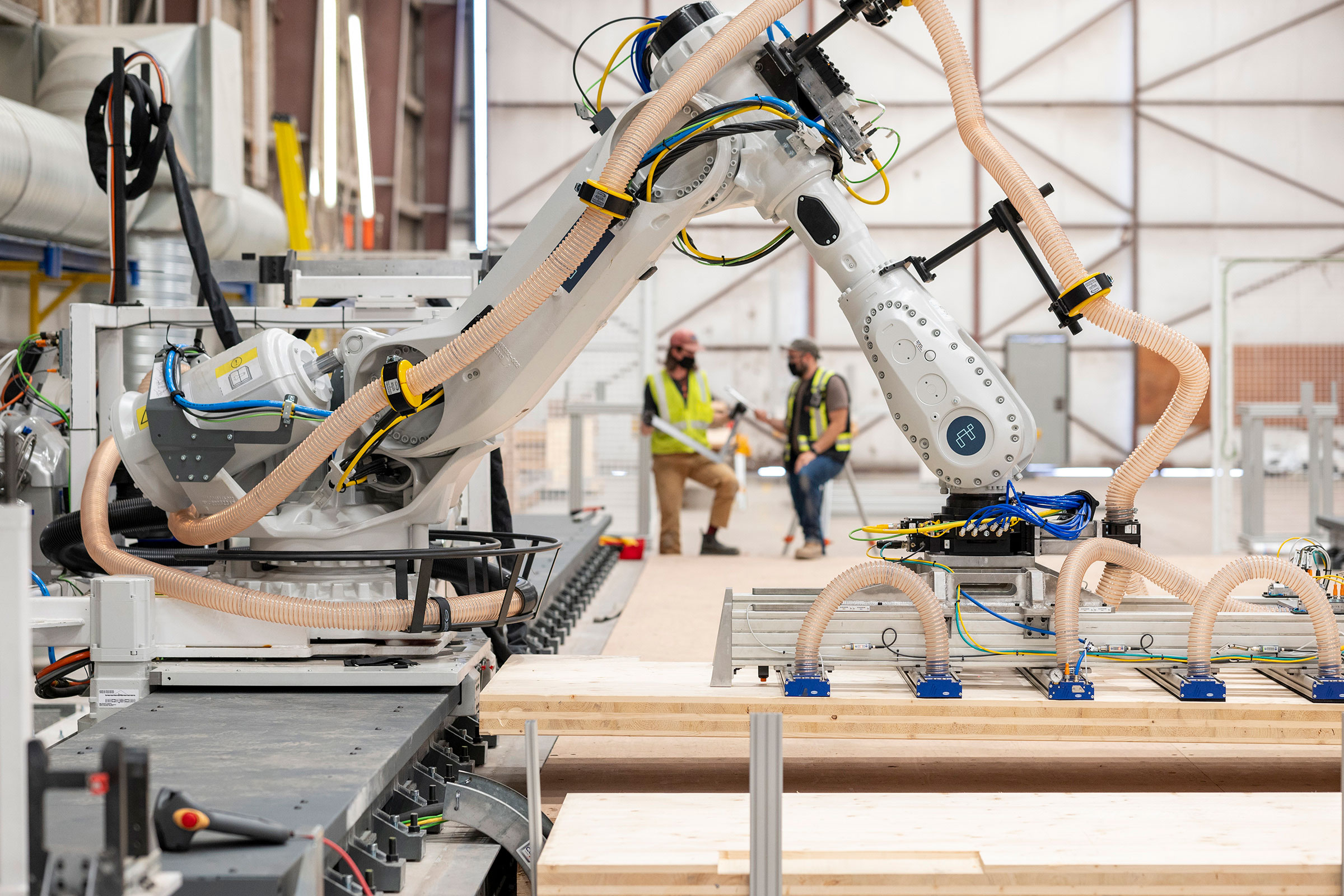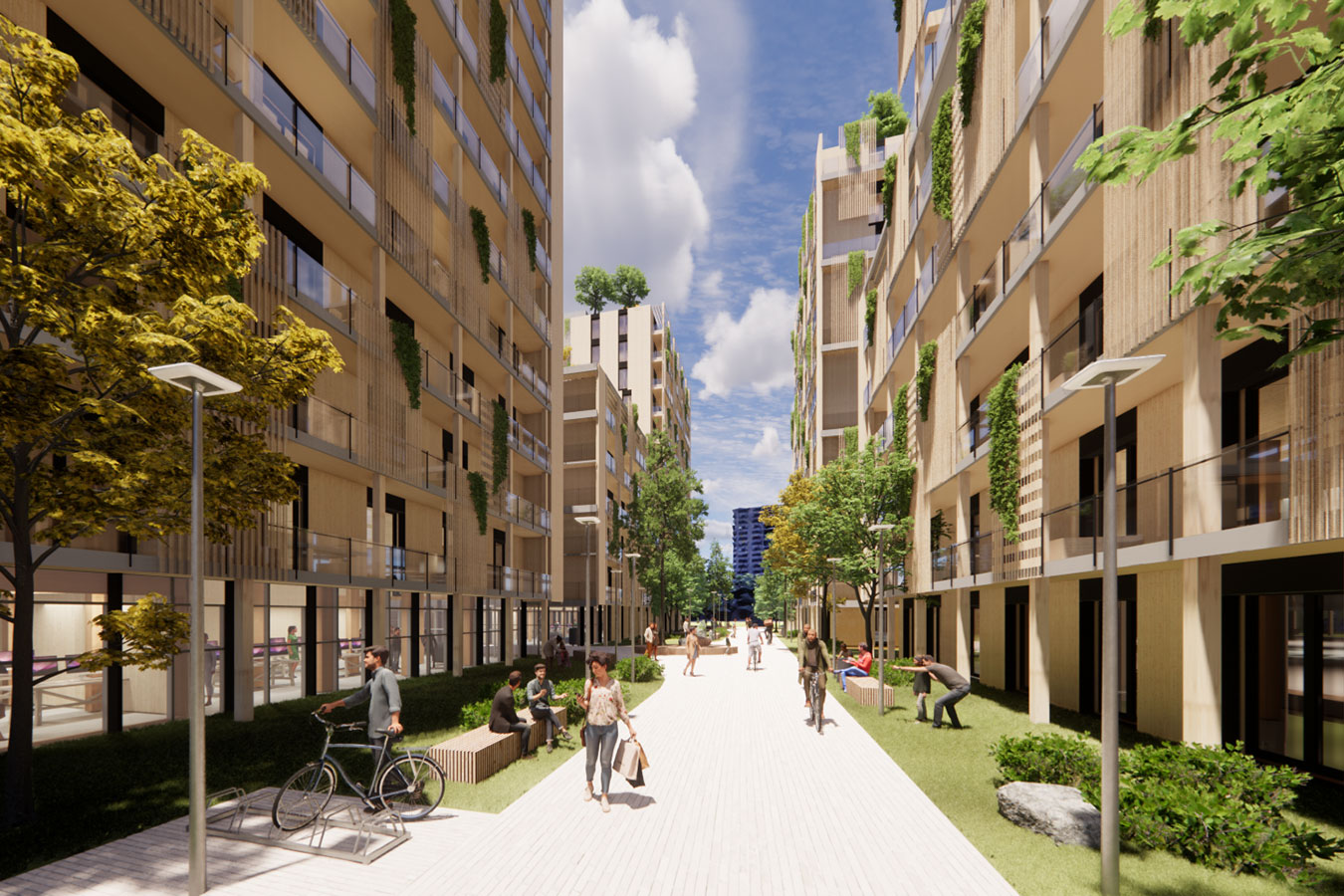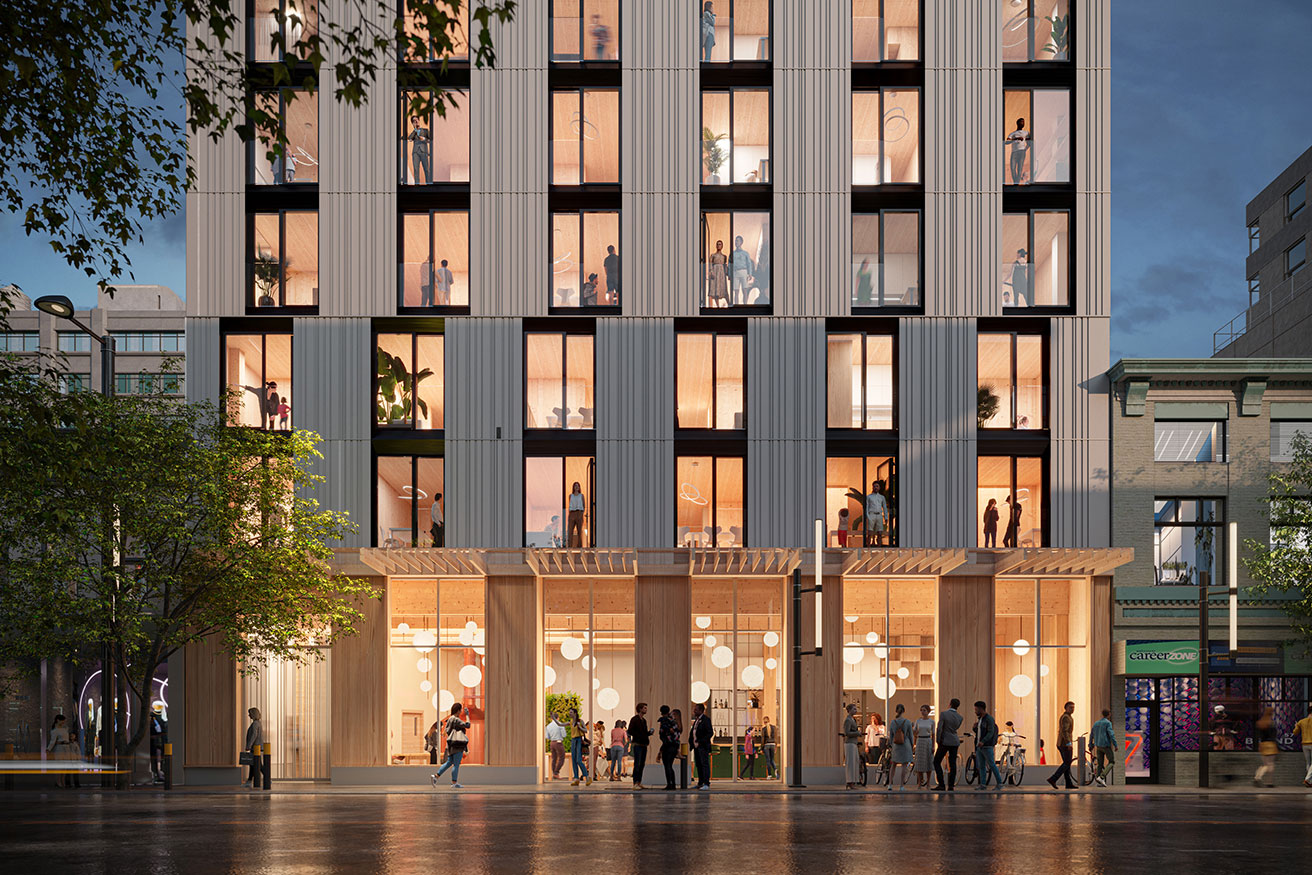Story at a glance:
- Architects and developers are using technology to build smart and sustainable urban developments to meet needs in major cities.
- The best tech technology allows architectural designs to be optimized and visualized to make even better designs and decisions.
- WHO estimates more than 68% of people will live in an urban area by 2050.
Many cities across North America are characterized by insufficient housing relative to demand, an inability to efficiently accommodate number of cars that traffic the streets, and limited access to everyday needs.
To combat the housing and amenity deficits in major cities, creative architects and developers are leveraging technology to build smart and sustainable urban developments. From parametric design to real-time visualization, technology enables architectural designs to be optimized and visualized, creating better designs for the present and the future.
Managing the Future of Urban Growth
With more than 55% of the population living in an urban area, and the World Health Organization expecting an increase to 68% by 2050, providing affordable housing and amenities for city dwellers is at the forefront of the conversation for policymakers and urban developers. Conscious developers are taking action to design and construct sustainable and inclusive urban developments that serve the communities that live within them. The hope is that through careful planning and conducive zoning, cities can grow to meet the needs of burgeoning populations while delivering a high quality of life.
The movement has caused a shift in the thinking of architecture, engineering, and construction (AEC) companies that take on these projects. This shift is one where developments are seen in their totality—including the impact on all stakeholders, which include the local community that will live and interact with the development for years to come. Taking this perspective means the design teams on projects understand their responsibility extends beyond delivering a project that is on time and on budget to also include the health, safety, and welfare of the community it is meant to serve.
Platform-Based Approach to Mixed-Use Development

Rendering courtesy of Intelligent City
Intelligent City is taking on this challenge with the mission of delivering better urban living. The technology-enabled housing company headquartered in Vancouver, Canada created a platform-based approach to scaling urban development using a technology platform they call Platforms for Life. Platforms for Life can design and build sustainable mid-to-high-rise mixed-use urban housing that fosters community, provides commercial amenities, and delivers affordable housing all while using a structural system based on carbon sequestering mass-timber construction.
They do this through a modern interpretation of the mixed-use building concept, merging multiple zoning classifications into one structure. Traditionally a building might be solely a residential apartment building or a commercial office building. In contrast, a mixed-use structure combines residential housing, commercial offices, retail businesses, and other zoning types all under one roof. Most often the ground floor is retail, including restaurants, offices, and shopping, and the floors above are residential apartments. Parking structures are also frequently included, usually below grade.
“Because of the commercial spaces on the ground floor of the buildings, whatever you need to do, you can do it within a travel distance of 15 minutes. This creates communities and provides better urban living than created by the typical high-rise concrete towers,” says Oliver Lang, CEO and cofounder of Intelligent City.
To strategically spread the use of mixed-use developments across urban centers, Intelligent City developed Platforms for Life—a proprietary product-oriented end-to-end technology platform and design approach that enables urban development at scale. By refining and standardizing the design and fabrication of innovative mixed-use structures, the development process can be repeated over and over, with each iteration modifying the basic components to meet the specific housing and amenity demands of the project.
The Parametric Design Solution

Photo courtesy of Intelligent City
Parametric design is a design method that uses a set of rules and parameters to define a design model. Parametric design is a subset of computational design, which has taken the architectural design world by storm. Computational design combines the power of computer processing and algorithms with human judgment, increasing the limits of architectural design.
With parametric design, the user inputs criteria—such as building codes, energy performance goals, and rentable floor area requirements—against which the design models can be tested. The parametric software uses this data to create innovative design solutions that represent the best balance of the project requirements, which are then further refined by the design team. The design team can take these initial designs and combine them with additional project-specific data like building lot dimensions or the number of apartment units desired. The software will update the model’s geometry to adapt to the inputted parameters and generate a suitable design solution according to zoning and bylaws.
“The underlying logic of how a building comes together is parameterized. Every building we design and build can be easily adapted because all elements and assemblies that make our buildings are pre-engineered and pre-developed. So whenever you adjust a design to a certain size or shape and add apartments to it, all the geometry adapts to it. You pretty much create a digital twin instantly,” says Oliver David (OD) Krieg, chief technology officer.
Parametric design is a huge piece of the puzzle in scaling strategic urban development. A parametrized design model, used alongside a robust design development process, prefabricated mass timber building elements, and automated assembly—all included in Intelligent City’s “Platforms for Life”—allows urban housing projects to be customized yet repeated across a city, across a nation, and beyond.
Incorporating Sustainability
Because the basic components of a parametrized design are pre-defined rather than entirely open ended, the system is particularly suited to an optimization process that finds the best combination of these components. Optimization criteria that is unique to Intelligent City’s urban projects is the development of sustainable and inclusive communities. The criteria Intelligent City’s uses for resilient designs are:
Affordability. With a refined design process using “Platforms for Life,” projects are delivered faster with fewer errors during construction. The results are a decreased overall cost, some of which is passed down to the end-user.
Environmentally friendly. Developments are designed with carbon neutrality in mind. Sustainable materials are used where possible, like prefabricated mass timber, a low-carbon alternative to concrete, or steel. In addition, buildings are designed to achieve Passive House standards, using a minimum of heating or cooling energy.
Longevity. Development projects are planned and designed for long-term use. Quality materials and adaptable designs ensure these urban developments continue to be durable, low maintenance, and future-proof to remain useful in the community for decades.
The Crucial Impact of Real-Time Visualization

Rendering courtesy of Intelligent City
While architects and engineers understand the power of parametric design, conveying it to clients requires stepping outside modeling software and quantitative algorithms. Intelligent City uses Enscape—a real-time rendering tool that connects directly to modeling software, to help clients visualize their projects in 3D.
“We were looking for a way to visualize the buildings quickly. If we couldn’t keep up with the iterations of the generated designs, then we wouldn’t be able to visualize them properly for our clients. We needed something fast, and Enscape met our requirements,” says Timo Tsui, Intelligent City’s computational design architect.
Real-time visualization is the processing and publishing of data in real time, or essentially architectural renderings on-demand. Real-time visualization tools like Enscape plug directly into the modeling software an architectural firm already uses. Realistic, detailed renderings are produced quite literally in real-time, as one navigates and updates the design model, rather than the hour- or even day-long duration of traditional rendering software.
The rendering quality is immersive and life-like without the need for additional time-consuming manipulation. On-demand realistic renderings allow clients to see a project before construction even begins with the visually intuitive view that allows complete understanding of the design from the earliest phases of design. The renderings are also a critical decision-making tool—clients can quickly decide on a layout, material, or finish based on a 3D rendering, which present options from a realistic perspective that doesn’t require any interpretation. Ideally, reviewing design renderings brings value to both the client and the design team by speeding up the decision-making process and creating realistic expectations for the finished project, bringing fewer changes during the construction phase.
Improving Workflows with Enscape
Enscape is the perfect complement to Intelligent City’s automated and efficient workflow. Platforms for Life enables a project to go from conception to construction within just six to 10 months. Architectural visualizations are utilized after the design development phase in a phase termed “virtual preconstruction.” Project designs are rendered and reviewed by clients, allowing any modifications to be incorporated before construction begins.
Adding architectural visualization to a design workflow might seem like an added step, but the renderings can be produced in real time, leveraging the data that can already be found in the design model. The result, beyond using the visualizations to bring a shared understanding of the design to all the project stakeholders, includes the additional benefits of:
Informed decision-making. The design team and clients can make decisions based on a realistic and immersive visualization rather than visually complicated BIM view or worse—a 2D drawing.
Enhanced client confidence. A picture is worth 1,000 words and an infinite number of BIM models. When a client can visualize their project with highly realistic 3D renderings, they can be confident in their personal and the team’s choices.
Better cost control. Architectural visualizations can be a key aid throughout the design process for resolving coordination issues across the various disciplines, resulting in designs that are more accurate and refined, ultimately leading to fewer changes in the construction process, where the budget impact is greatest.
Real-time visualization enables improved designs for an improved future. If Enscape sounds like a great addition to your workflow, sign up for the 14-day free trial to bring your projects to life effortlessly.


